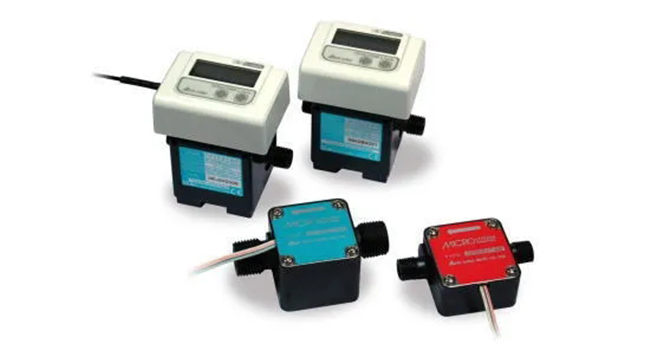
Flow Sensor: The "Flow Guardian" of Industry and Life
Accurate measurement of fluid flow is crucial in industrial production, environmental protection, healthcare, and other fields. As a key device to achieve this goal, flow sensors play an irreplaceable role. So, what exactly is a flow sensor?
Definition of Flow Sensor
A flow sensor is a device that can detect the volume or mass flow rate of a fluid (liquid, gas, vapor, etc.) through a pipeline or channel per unit time, and convert it into an output signal (such as voltage, current, pulse, etc.). It is like the "eyes" of the fluid system, allowing people to understand the flow state and flow rate of the fluid in real time.
Working principle
Flow sensors are based on different physical principles to achieve flow measurement, and there are several common ones:
Mechanics principle: For example, a turbine flowmeter calculates flow by detecting the rotational speed of the fluid that drives the turbine to rotate.
Electromagnetic principle: The electromagnetic flowmeter is based on Faraday's law of electromagnetic induction, which detects the induced electricity generated by a conductive liquid in a magnetic field
Measure flow rate using momentum.
Ultrasonic principle: Ultrasonic flowmeter calculates fluid flow rate by detecting the time difference of ultrasonic propagation in the fluid, and then obtains the flow rate.
Thermal principle: A thermal flowmeter determines the flow rate by measuring the cooling effect of the fluid on the heat source.
classification
According to the working principle and structural characteristics, flow sensors can be divided into the following categories:
Velocity based flow sensor: calculates flow rate by measuring fluid velocity and combining it with pipeline cross-sectional area, such as turbine flowmeter, electromagnetic flowmeter, etc. This type of sensor has a wide measurement range and high accuracy.
Volumetric flow sensor: determines flow rate by measuring the volume of fluid per unit time, such as elliptical gear flowmeter, waist wheel flowmeter, etc. They are suitable for high viscosity fluids, but have complex structures and high costs.
Mass flow sensor: directly measures the mass flow rate of a fluid, unaffected by density and temperature changes, such as thermal mass flow meters and Coriolis mass flow meters. This type of sensor is widely used in high-precision measurement scenarios.
application area
Flow sensors play an important role in multiple fields:
Industrial production: used to measure the flow rate of raw materials, intermediate products, and finished products, achieving precise control and optimization of the production process.
Environmental protection: used to monitor the flow of sewage and exhaust gas, and help manage pollutant emissions.
Medical and Health: Used for infusion pumps, ventilators, and other equipment to accurately control the flow of medication or gas, ensuring safe treatment.
Energy management: used to measure energy consumption such as natural gas and tap water, and assist in rational energy allocation and conservation.
development trend
With the development of technology, flow sensors are showing the following trends:
Intelligence: Integrating microprocessors and intelligent algorithms, with data processing, self diagnosis, and remote communication functions to improve measurement accuracy and reliability.
High precision: Continuously improving measurement accuracy and stability through improved design and the use of new materials.
Miniaturization and integration: Integrating sensors with signal processing circuits and communication modules to meet the needs of miniaturized devices and portable instruments.
Multi parameter measurement: In the future, flow sensors will simultaneously measure parameters such as temperature, pressure, and density of fluids, providing richer information.
In short, flow sensors, as the core equipment for fluid measurement, play an important role in various fields. With the continuous advancement of technology, it will bring more convenience and value to human production and life.

